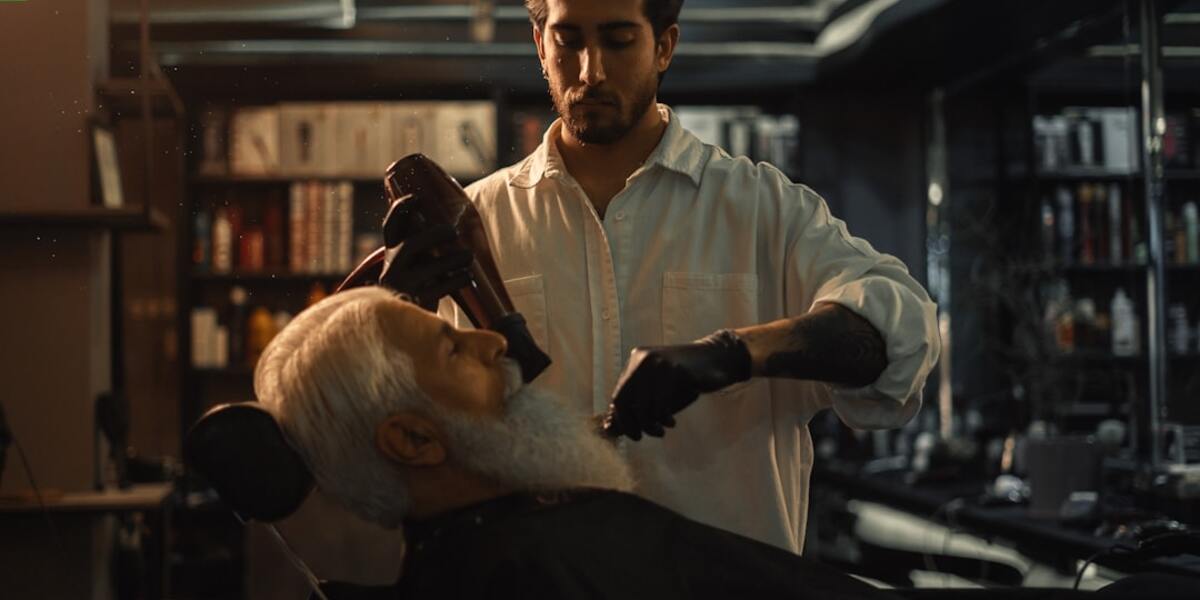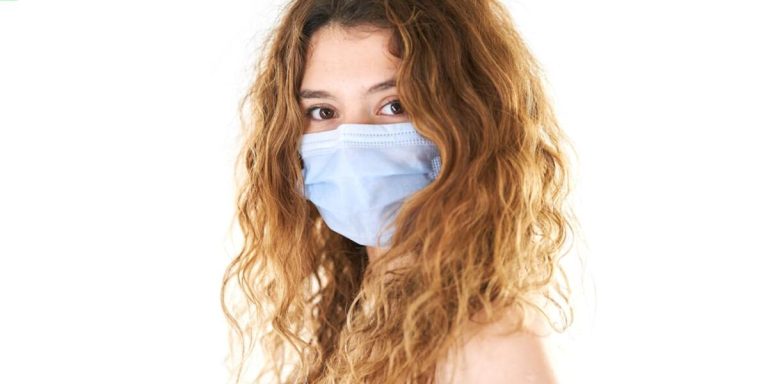Hair Care for Teens: A Guide to Healthy and Lustrous Locks
Navigating the world of hair care for teens can feel like an uphill battle. With hormones kicking in, changes in texture and volume are inevitable at this age. This guide will help transform these tumultuous times into a period of discovery and learning about proper hair maintenance.
Understand the different facets of teen hair health to achieve lustrous locks. These locks should not only look good but should also reflect overall well-being. Overcome common teenage hair dilemmas like greasy strands or dry frizz with insights from this comprehensive guide, which also promotes healthy growth patterns.
Did you know?
Did you know? Adults and teenagers have about 100,000 to 150,000 hairs on their head. Each individual strand goes through a growth cycle that lasts between two to six years – this makes regular hair care crucial for maintaining healthy tresses!
Understanding the Unique Hair Care Needs of Teens
Teen years bring rapid change and development, including challenges for hair due to hormonal fluctuations, lifestyle changes, and experimentation with hairstyles and products. Understanding adolescent hair care is crucial to maintain healthy tresses during these formative years.
Hair care for teens goes beyond just regular shampooing. It involves:
- Identifying your hair type—oily, dry, or combination.
- Creating a routine that suits your specific hair needs.
- Watching for signs of damage like split ends or excessive oiliness.
- Addressing common teen issues such as hair fall due to academic and extracurricular stress.
Today’s emphasis on self-expression often leads teenagers to frequently experiment with their appearance. They often:
- Use styling tools such as straighteners, curlers, and dryers
- Apply chemical treatments like coloring at an early age
These actions can lead to irreversible harm if teenagers do not perform them cautiously under professional supervision.
Fostering good habits from this stage will help pave the way toward lifelong beautiful and robust strands without compromising youthful style expressions indeed much desired by Gen Z in building up their distinct social personas online/offline!
Assessing Teenage Scalp Health: Common Concerns and Solutions
During the dynamic changes of teenage years, it’s crucial to pay attention to scalp health. A healthy scalp forms the foundation for strong hair that radiates vitality and confidence—a key aspect for teens navigating high school crushes or first-time job interviews.
Teen scalps get easily afflicted by issues such as dandruff, greasiness or dryness due to both hormonal fluctuations and lifestyle choices like diet habits or over styling. Understanding these challenges will help decode an effective hair care regimen tailored specifically for teenagers.
Many teenagers count dandruff as their number one enemy in head hygiene. Hormonal changes in teen bodies, which often lead to oily skin, mainly cause this pesky problem. The oily skin encourages yeast overgrowth, causing the flaky white particles known as dandruff.
1) Choose shampoos containing zinc pyrithione or selenium sulfide.
2) Wash your hair regularly but avoid daily washings lest you strip away natural oils essential for scalp nourishment.
Navigating Hormonal Changes and Their Impact on Teen Hair
The teen phase witnesses exponential surge in hormone production – specifically testosterone in boys and estrogen in girls. These hormones don’t just spur growth spurts and acne; they can also lead to changes in hair texture, volume, and oiliness.
Hormonal upheaval often leads to an increase in sebum or natural oil production on the scalp. This sudden oiliness can cause teenagers to feel their hair is always greasy or dirty, tempting them to wash it too often. However, it’s important to note that daily shampooing can strip away essential moisture, leading to dryness.
Opt for a gentle cleansing routine two to three times per week instead of washing every day, using products formulated specifically for a teen’s unique needs. Look for products such as:
- Deep-cleansing yet hydrating shampoos
- Conditioners rich with proteins and vitamins
These are designed to strengthen growing strands.
Fluctuating stress levels during adolescence can have dramatic effects. Stress, whether from academics or emotional turmoil, can significantly increase cortisol levels, the ‘stress hormone.’ Elevated cortisol levels may lead to premature thinning and potential hair loss. To prevent these issues, consider practicing regular relaxation techniques and ensuring balanced nutrition:
- Engage in meditation
- Practice mindfulness
- Do yoga regularly
Additionally, consume a diet rich in iron and zinc and take necessary supplements to protect your hair.
Maintaining these good habits not only preserves shiny locks during adolescence but also promotes overall well-being in the future.
Daily Routines for Healthy Teen Hair
To maintain healthy hair, teenagers should establish a solid daily routine, as hormonal fluctuations during these years can affect hair texture and growth patterns. Implement good habits early on by:
- Washing regularly
- Conditioning specifically for their unique needs
Teens should carefully select high-quality shampoos, avoiding those with harsh chemicals like sulfates and silicones that can strip natural oils and damage hair over time, instead of grabbing appealing products from the store shelf.
- Gently drying hair with a microfiber towel
- Avoiding rough rubbing with cotton towels, which causes less friction than traditional towels
Protect your strands daily! Wear hats during peak sunlight hours to shield your hair from damaging UV rays. Additionally, sleep on silk pillowcases to cut down on nighttime frizz. Silk causes less static electricity than standard fabrics, leading to a healthier look every morning.
Promoting these simple yet effective steps will empower teenagers now so that looking after their tresses becomes second nature well into adulthood ensuring lifelong beautiful head-turning waves, curls or straight lengths whatever they desire!
Choosing the Right Products: Shampoos, Conditioners, and Natural Oils
Establish a beneficial routine for healthy teen hair by choosing the right care products. Hormonal changes as teens can cause varying scalp and strand conditions, prompting informed decisions on shampoos, conditioners, and natural oils.
- Cleanse the hair.
- Restore nutrients.
- Maintain balance.
For oily scalps or dandruff-prone individuals, choose shampoos containing zinc pyrithione to effectively combat flakes.
People with dry scalps might benefit from gentle formulations with moisturizing agents like glycerin.
The selection of suitable conditioner primarily depends on your hair type – fine textured hairs benefit from volumizing formulas whereas thicker tresses thrive well under deep-moisturising variants fortified with nourishing elements like shea butter and coconut oil.
Conditioner gives additional moisture necessary for frizz-free glossy manes; always remember to apply focusing mainly onto the mid-lengths avoiding roots because overconditioned root area could weigh down your locks making them appear flat.
Beyond these staple items are an array of essential oils yielding great benefits when incorporated into daily routines responsibly.
Essential Habits: Gentle Brushing Techniques and Protective Styles
Start from the ends and work your way up to the roots when detangling your hair. This approach minimizes breakage and follicle strain while sorting out knots effectively. Use brushes with smooth tips such as boar-bristle or wooden ones to minimize frizz, as they distribute natural oils evenly down each strand.
In addition to brushing techniques, adopting protective hairstyles plays an equally important role in teen hair maintenance routine too.
Protective styles like braids, twists, buns, or updos protect your hair from environmental damage such as UV rays and pollution. They also:
- Reduce friction from scarves, hats, or pillowcases during sleep
- Prevent aggressive pulling at the roots that can weaken them and potentially cause hair loss over time
Regularly changing these hairstyles every two weeks approximately will help maintain both scalp cleanliness without neglecting style factor completely because after all who doesn’t love flaunting their locks right?
Gentle brushing techniques combined with suitable protective styles form essential components of daily routines promoting healthy teen hair upkeep when followed consistently as part of one’s self-care regimen.
Addressing Common Teen Hair Issues
Teenage years often perplex teens, affecting them emotionally, academically, and even their hair. Hormonal changes cause a variety of hair problems for many teenagers:
- Unexpected oiliness
- Dandruff
- Frizz
- Breakage
They need a tailored approach to hair care that addresses these issues and nurtures their locks.
Teens often struggle with an oily scalp, leading to greasy-looking strands by midday. Overactive sebaceous glands cause this issue during puberty due to fluctuating hormones. However, you can avoid daily bad hair days! Regularly wash your hair with a mild shampoo designed to remove excess oil while preserving essential moisture.
To prevent frizziness and breakage caused by heat-styling appliances, follow these steps:
- Use curlers, straighteners, and blow dryers on lower temperatures.
- Section your hair into partitions before styling to ease out tangling hassles.
This approach significantly reduces the chances of unwanted breakage.
Are you worried about dandruff? You’re not alone—it’s extremely common among adolescents. A yeast-like fungus called malassezia, which naturally thrives on scalps, mainly causes it. This fungus leads to an overproduction of skin cells that eventually flake off as unsightly ‘white flakes.’ Dandruff can drastically affect your self-esteem, making social situations especially challenging when you’re around peers.
Dealing With Oiliness or Dryness: Strategies for Balance
Hair care for teens often requires tackling specific issues like excessive oiliness or dryness. Both these conditions not only affect the appearance of hair but also impact its health and maintenance.
To manage oiliness, wash your hair daily with mild shampoos meant for oily hair. Strong shampoos can strip the scalp of natural oils if used often, leading to more oil production. Use clarifying rinses once a week to remove excess grease without causing damage.
Try avoiding styling products as much as possible because they tend to attract dirt and increase greasiness. If necessary, select those free from heavy ingredients such silicone or petroleum jelly so your pores don’t get blocked contributing further into the problem.
On contrast if you’re grappling with dryness instead consider adopting an entirely different set of strategies!
Dry teen hairs demand moisturization above all else – hence incorporate hydrating conditioners and masks post shampooing at least twice weekly would go a long way towards replenishing lost moisture levels enhancing softness & shine significantly.
Tackling Dandruff and Itchiness in Adolescence
“An aspect not to be ignored in hair care for teens is the issue of dandruff and itchiness, particularly prevalent during adolescence. These troubles may seem daunting at first but can manage with a well-planned routine.
Firstly, understanding why these problems arise is vital. During adolescence, hormonal changes happen which increases oil production on the scalp leading to flaky and itchy skin known as dandruff.
1. Choose an Anti-Dandruff Shampoo: Not all shampoos are created equal, especially when it comes to dealing with adolescent hair issues like dandruff or itching. Look for one containing zinc pyrithione or salicylic acid – key ingredients proven to combat dandruffs’ root cause.
2. Wash Hair Regularly But Not Too Often: While keeping your scalp clean helps reduce excess sebum and dead cells that contribute to flakes formation; washing too frequently might strip away essential oils leading dryness causing more irritation.
3.Schedule In Some Scalp TLC: Incorporate natural remedies such as tea tree oil massage once a week into your schedule will work wonders visibly reducing those pesky white flakes while bringing much-needed relief from itchiness due its anti-inflammatory properties.
4.Maintain A Healthy Diet For Your Hair : Ensuring nutritional intake rich in B-vitamins , Omega-3 fatty acids aids improving overall health including supporting healthy scalp conditions thus discouraging formation of unwanted occurrences like Dandfrufs .
Conclusion
So there you have it! This comprehensive guide to hair care for teens helps you maintain healthy and lustrous locks through the tumultuous years of adolescence. Remember, while experimentation is part of growing up, making sure your mane stays robust should be a priority too.
Continue exploring our website for comprehensive “Hair Care and Maintenance” guidance. Learn how to maintain curls or tackle dandruff—we cover every aspect of hair care. Enjoy your journey to impeccable hair health!







